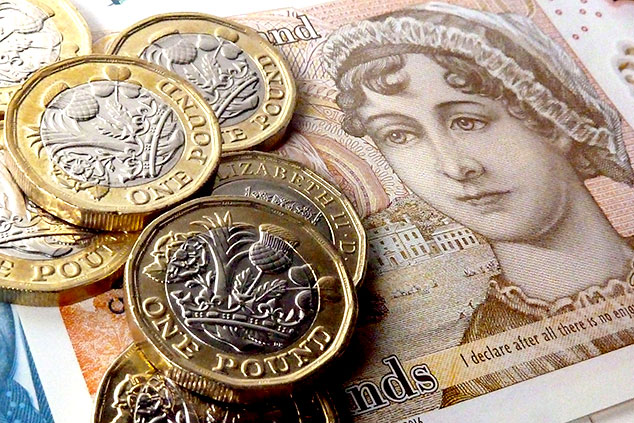
This article is taken from our FREE daily investment email Money Morning.
Every day, MoneyWeek’s executive editor John Stepek and guest contributors explain how current economic and political developments are affecting the markets and your wealth, and give you pointers on how you can profit.
What with markets sliding and bond yields tumbling in a “flight to safety”, inflation is the last thing on investors’ minds.
Instead, the fear is that we’re heading for recession and that deflation will take hold once again. A scary prospect, what with interest rates still very near 0%.
I’m not so sure that this is what the future holds.
Here’s why.
Why ultra-low interest rates quash risk-taking appetite
In theory, low interest rates are meant to encourage risk-taking and therefore economic growth, by making it easier for companies to borrow money and by driving down the level of “risk-free” returns investors can make.
But as with everything in economics, that’s not all there is to it.
There’s a minority view – but I think, a correct one – that low interest rates can be part of the problem when you’ve faced a crisis like the one we’ve just had.
One thing that always struck me about Japan’s deflation years was that ultra-slack monetary policy was not helping matters.
Say you’re a saver in Japan – low interest rates mean that your expected future returns are lower, and your savings generate next-to-no income in nominal terms. Does that prospect boost your risk appetite or shrink it? Does it make you want to strike out on new ventures, or does it make you want to save even harder?
I think it’s no coincidence that high savings and a love of currency speculation thrive side-by-side in Japan. It’s a barbell strategy – most of your cash sits in low-yield ultra-safe stuff and then you buy a pile of lottery tickets in the vain hope that you might one day have enough to retire on.
And it’s the same story for companies. Ben Hunt of Epsilon Theory wrote a good piece earlier this week on how ultra-low interest rates have affected corporate behaviour. The stereotypical view – and one I’ve been guilty of falling into sometimes – is that low rates encourage companies to take unsustainable risks.
And yet, says Hunt (who is not by any stretch of the imagination, a permabull): “I am shocked by how few management teams have put their companies in a position of existential risk at the tail end of unprecedented monetary policy stimulus and excess.”
Why has this happened? It’s because “super-low interest rates do not spur corporate risk-taking.” Instead of investing in “real-world growth opportunities” that boost productivity, such as building new factories or creating new products, companies have favoured “market-world growth opportunities like stock buybacks and dividends.”
Rather than take risks on innovative projects, companies have used the low-rate era to cement their existing dominant positions. They have indulged in financial engineering, rather than the real thing. (And as my colleague Merryn has pointed out regularly, many companies have diverted money to fund artificially-inflated pension deficits).
In other words, ultra-low interest rates don’t stimulate risk-taking behaviour. They suffocate it. As Hunt puts it: low interest rates don’t “spur productivity growth and ‘good’ inflation”. Instead, it provides “infinite liquidity for a competent management team to satisfy its earnings growth goals in a risk-free manner!”
You can look at the story of the nightmare stock of the week, Apple, to see this in action. In the Steve Jobs era, Apple took risks to create innovative, “must-buy” products. In the Tim Cook era, Apple avoided taking risks and has ended up quietly stagnating (or it was quiet, until yesterday’s results).
It’s very interesting that this era of quiet stagnation at Apple should be seeing the beginning of its ending just now, just as monetary policy is tightening.
How inflation could see a “sonic boom” later this year
What does this all suggest for investors? It indicates a pathway by which inflation could take off.
Again, quoting Hunt: “By the same token, as the cost of money increases, competent management teams will need to take more risk in the real world, and that is what generates wage inflation and productivity growth.”
Another analysis to hit my inbox comes from Nomura, where its analysts suggest “nine grey swans for 2019”. And the ninth one is – you guessed it – inflation.
Nomura points out that if the US recovery continues for longer than expected, and the US government keeps spending, then “US economic conditions may become ripe for an inflation ‘sonic boom’ to hit later in 2019.”
The employment picture still points to rising wages, with chief financial officers at US companies expecting salaries to continue rising this year. And the Federal Reserve’s “underlying inflation gauge index” points to the same thing.
Meanwhile, if we get a rebound in commodity prices later in the year, that would simply be the icing on the inflationary cake.
What if central banks reverse course and start printing money again? It might turn around asset prices, but given that we’re already at full employment, wage inflation would simply pick up faster. So it doesn’t seem likely that it would have the same stifling effect at this stage.
In short, I still reckon that inflation is going to be at the heart of the next proper nasty surprise for investors, and I think that being prepared for it in your portfolio is a sensible move. It’s a subject we’ll be monitoring closely in MoneyWeek magazine over the coming months – sign up here to get your first six issues free.